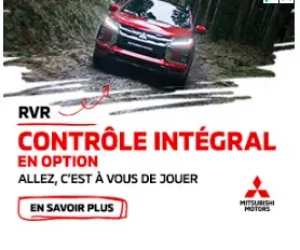Throughout history there have been examples of car designers who have developed a prototype so different from established car manufacturers they have been labelled ambitious visionaries that are either delusional or crazy, though the word disruptor is the current description du jour.
Nikita Bridan and his twin brother Iliya, co-founder of California-based design and car manufacturing company Oilstainlab, proudly consider themselves maniacs.
“That’s a word we love and everyone who is with us kind of understands that. You’ve got to be a little crazy,” Nikita told me during a recent visit to Toronto, where he did a slide presentation about the HF-11 for car enthusiasts at the RClub.

The HF-11 is a high-performance car with a powertrain that can be operated with an internal combustion engine or an electric battery.
“We see ourselves as pursuing a very logical thing, and we do wonder why no one else is doing it,” Nikita added. “I don’t know if that makes you a disruptor or you’re looking at things from a slightly different point of view. We have a little motto, it’s basically fiction to fact. I just think we live slightly further ahead than the rest of the world. Failure in many ways is recognized as a bad thing. We don’t see that and understand what failure is. We also always pursue ideas that people think are too crazy, too expensive, not practical and it goes back to this whole idea of fiction to fact.”
So who are these maniac car designers? They are 37-year-old twins who have spent most of their lives fascinated by car design. They were born in Ukraine and came with their parents to Canada at age three and settled in Halifax. They lived there on and off for more than 10 years with a few years in London, Ontario. From a young age they were fascinated by cars and began doing drawings of them.
When they were 12, they did an aptitude test and scored remarkably high and were put on an accelerated program of home schooling for two years, taught by their parents, both of whom have PhDs. Then they went to Italy to study basic car design in Turino. They were the youngest students in the program, but Nikita said they were probably the biggest sponges. He said toward the end of the two-year program they were encouraged by noted America automobile designer Frank Stephenson to continue their education in the U.S. They left for California for more specialized education at the ArtCenter College of Design in Los Angeles.

“It’s a very expensive school, and that’s originally why we didn’t go there, I think our parents wanted us to grow out of this phase and become lawyers,” Nikita said with a laugh.
They began the five-year program that included an internship halfway through. Nikita did his with Volkswagen, Iliya with Honda.
After graduation, they had multiple job offers and chose Toyota. They worked for various companies over a 10-year span experiencing the process of designing for manufacturers that weren’t necessarily creative. He said it was a cycle of incredibly talented people working to produce the ugliest of cars.
“It’s not the designers or engineers fault, it’s oftentimes bigger factors,” Nikita said. “You see that and go through that process a number of times and it’s easy to become jaded or frustrated or whatever, and you can just continue your career that way and look for raises or do something about it.
“For me, the turning point was I was fired from General Motors. It was a combination of a number of factors. There was basically overtime abuse and a bunch of other crap. We were working at the time on a trilogy for Cadillac and as a team we pushed the company to the breaking limit of what they were comfortable with and way beyond that. I got fired for talking too much.”
That was in 2018 and the following year he and his brother officially started Oilstainlab. It is derived from oil being the lifeblood of cars, stain representing the stain left on driveways by people working on their cars, and lab being the creative process of designing cars. The saying for Oilstainlab is “where the past overtakes the future.”
Nikita said he and Iliya began their company with some friends with the intent of starting an anonymous art collective. He added it wasn’t until they got their green cards in 2019 that they transitioned from stealth mode to public mode.
They developed a prototype combining a Porsche 911 with the Interscope Porsche IndyCar from the 1970s and called it the Half11 – an open-wheel speedster with 650 horsepower, 8,500 RPM and a weight of 1,800 pounds.
They started posting images on Instagram, which at the time was about visual photography, with an alternate reality about the car and its history. In essence, it was mocking what automakers do to market a new car.
“That took the internet by storm and pissed off people but also built up a pretty passionate cult of people and we’re ridden that over the last five, six years and obviously developed a car in public, which no one ever gets to see,” Nikita said.
After securing money from angel investors, it allowed the Bridans to expand their business. They debuted the Half11 in 2024 at the Goodwood Festival of Speed and then approached people with experience in the automotive world. Oilstainlab’s board is quite impressive, with individuals that have more than 15 years in the business, holding 12 patents and leading 45 projects with major manufacturers that have resulted in more than six million cars on the road.
“We asked them to join the team and to our great surprise they said yes,” Nikita said. “These are people who have done serious things with big corporate companies.”
That led to the HF-11, which just may become the next big thing in high performance cars, especially with interchangeable gas and electric powertrains.
Oilstainlab will begin production with 25 bespoke cars and continue with track cars and then street cars.
I wondered if the company would produce a race car at some point as a means to promote the company name.
“With the technology we’re using with electric, it starts to open up the avenues of dreaming of winning the biggest race in the world,” he said. “I think that would be a feather in any company’s hat if they could do that. But (the saying is) to become a millionaire in motorsport you start with a billion.
“Those days are in the past where the racing cars were connected to the street cars. In many ways racing has become so compromised and so hardcore and professional that what makes a good race car makes a bad streetcar. The crossover increasingly is getting further and further apart.
“While I would love our cars to win a race and prove it, we also will make so few of them we don’t really need the market that much.”
He also said the intention is not necessarily to sell Oilstainlab at some point to a manufacturer or individual.
“Everyone’s got a price, but for us it’s a genuine passion project to push the limits and often that doesn’t necessarily have the biggest commercial appeal,” Nikita said. “The cars are going to be $2 million, and what’s the market for that? It’s not necessarily hugely scalable. We’d love to have a partnership with big OEMs or become a skunkworks for somebody that can invest huge amounts of R&D. We’ve kind of done that in our past career when we were working for the OEMs, so it’s not something we terribly aspire to.
“Most companies won’t say what they hate, we say we hate boring, we hate silence and particularly EVs. We hate purely digital experiences – no gears, automatic – and then we say we hate electric. That is really a reference to what is on the market today and the way it’s done.”
The brothers are bullish about making believers out of doubters. He said when they started their business critics said it was a terrible idea claiming a 2,000-pound electric vehicle was impossible because no one’s buying EVs and OEMs are cancelling their plans for them.
“We love that because it means we’re the only ones that think this way and we have confidence we can find the solutions but also connect with people so they understand our point of view and they will adopt it,” he said.
Perry Lefko is the Content Manager of The Car Magazine. He can be reached at [email protected]. Feel free to forward any story suggestions or comments.







